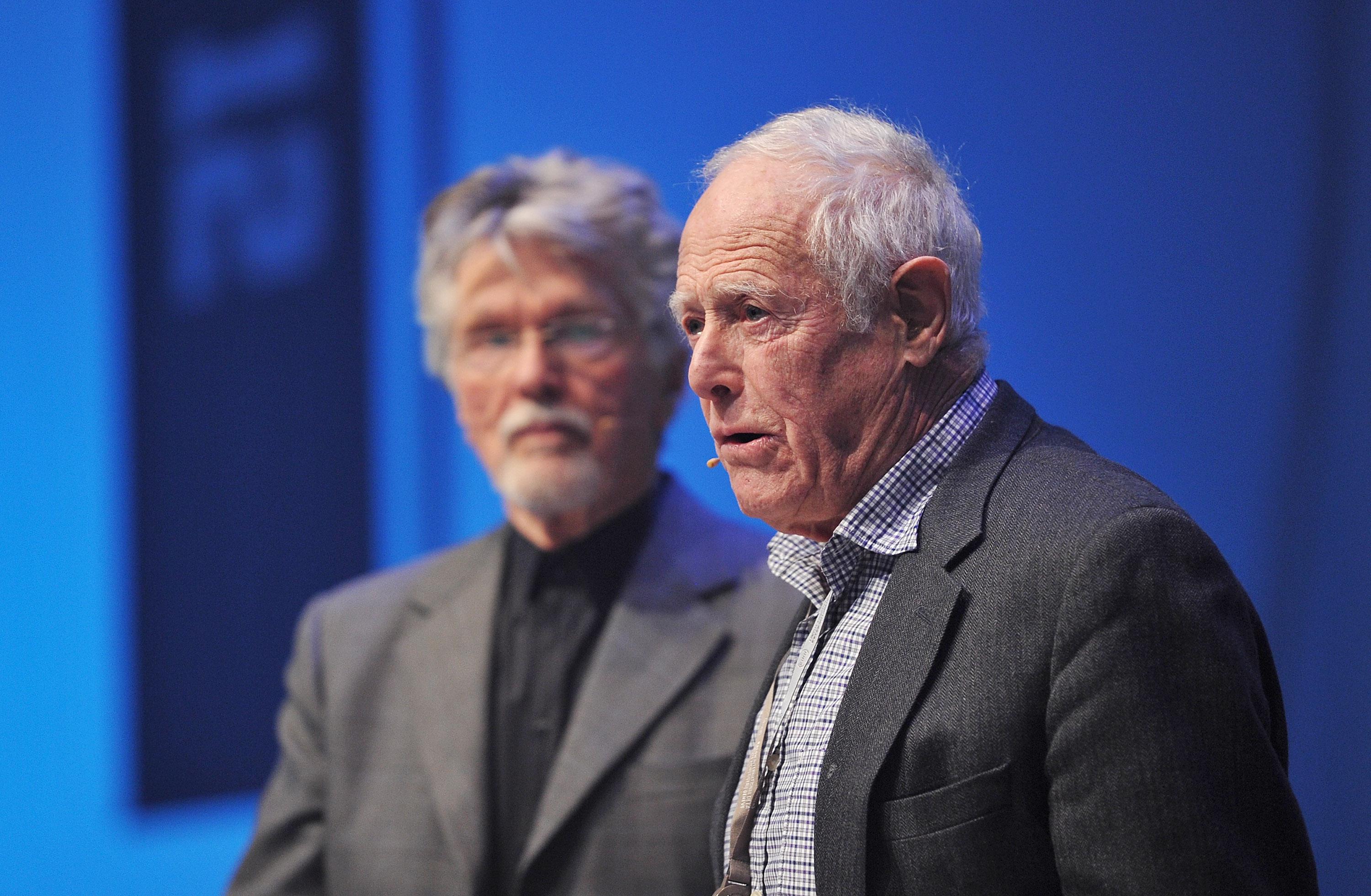The publication of James Salter’s excellent new novel, All That Is, has occasioned an outpouring of critical support, an attempt to get the underappreciated writer his due. Nick Paumgarten’s New Yorker profile is perhaps the biggest such push for Salter love, and includes many excellent details about the irascible writer’s work and life. Our favorite such detail? That Salter wrote a series of profiles for People magazine in the 1970s.
It’s not just that the author of the sexually explicit 1967 classic A Sport and a Pastime was a regular contributor to a periodical now known for gracing dentists’ offices and grocery store checkout lines. It’s who he was writing about for the magazine—and how. Between 1974 and 1976, Salter profiled Vladimir Nabokov, Graham Greene, the Chinese writer Han Suyin, General Sidney Berry, and socialite and author Lady Antonia Fraser. Han Suyin expresses admiration for Mao and tells Salter that she bought her daughter for $1,000 (“children were for sale everywhere then,” he writes). Graham Greene shares his love for Kurt Vonnegut, and suggests that he has little use for Philip Roth. Fraser says she can read 3,000 words per minute.
What these profiles really teach us, though, is that People used to run several-page profiles of notable figures who weren’t on TV or in the movies (“this was your father’s People,” as Paumgarten puts it), and in Salter’s distinguished prose, no less. “The great chandeliers hang silent,” he writes of the Hotel Montreux, where he meets Nabokov. “Novelists, like dictators, have long reigns,” he writes elsewhere in the piece.
As Salter told The Paris Review, “It was a way to make a living.” Salter has never had the kind of fame that allows a novelist to subsist only on writing fiction. (A Sport and a Pastime sold fewer than 3,000 copies when it was first published). After selling swimming pools for a while, he eventually got work writing screenplays for Hollywood, including the Robert Redford skiing movie, Downhill Racer. Salter wrote for other places, too, including The New York Times. People may seem like a silly magazine today, but back then they paid for James Salter to fly to Geneva to meet Nabokov. And Salter’s eye for detail and his elegant sentences serve the magazine well. His background, too, suited him to the editors’s choice of subjects. Like most of them, he was a writer, of course. He also went to West Point and fought in Korea, so the sit-down with General Berry, then the new head of West Point, makes sense.
And there were, perhaps, reasons to assume that Salter’s pieces about Berry, published during the tail-end of the war in Vietnam, and Han Suyin, who had just published the second volume of a sympathetic biography of Mao Tse-tung, would avoid controversy. As Paumgarten says of Salter’s novels, “his subjects seem to exist in a world without politics.” The profiles indeed use a light touch when it comes to geo-political drama—and other potentially awkward material. Graham Greene, for instance, calls Saul Bellow “difficult.” After the Greene profile was published, Bellow wrote Salter—who was born James Arnold Horowitz—to tell him, “by ‘difficult’ he meant Jewish.”
